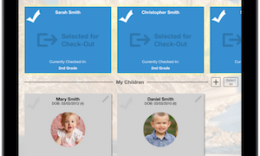Comprehensive Candidate Screening – The Background Check

The comprehensive screening process includes seven key elements. This post is highlighting element number two, the local, state and national background check process. Learn why background checks are an important piece of the overall safety puzzle, how they work, what to look for in a service provider, and the information not included.
In the coming weeks, we’ll cover the remaining five elements of the screening process so make sure to check back for additional information.
What to know
The background check is a vital element of a comprehensive screening process and important to include in a general safety plan. It’s not a silver bullet and can often lead to a false sense of security if it’s the only action being taken to evaluate whether or not a candidate should have direct access to children.
When thinking about background checks consider these statistics:
- Less than 10% of child sexual abusers are criminally prosecuted, meaning 90% will have no red flags or marks in their history when undergoing a check
- 38% of repeat sexual offenses take place in areas other than where the previous offense was committed
These stats paint a solid picture of the importance of going beyond self-authenticating information for applicants and utilizing outside sources to verify an individual’s qualifications. Ideally, a thorough check should be done for every person who works with, volunteers, or maintains a mentoring role with children and youth. Organizations must set high standards requiring everyone in leadership, staff and volunteer roles be fully screened and complete a background check.
How They Work
Often background checks will act as a deterrent for those with the intent to harm children. They can also be a prerequisite for insurance coverage. Background checks should be repeated every 12 to 24 months depending on the person’s role. Conducting a local, state, and criminal records check is always best. Keep in mind; the FBI national criminal database, the state sex offender registry, and the national child abuse archive require an applicant’s fingerprints to be provided.
If cost is a constraint, or perhaps budget is tight in your organization, an option to consider asking applicants who will be in contact with children to cover the cost (approximately between $10 and $20) for their check. Having a candidate pay for their background check can be a good way to gauge their level of commitment to the organization and rarely does anyone refuse.
Also, it’s helpful for leadership to establish which positions will require screening and which ones won’t. An example would be if a volunteer is making calls or managing administrative details, but rarely interacts with children, should they have the same level of screening as someone who works directly with kids the majority of the time.
The Professionals
Professional screening companies are a good resource for leveraging databases from law enforcement, local and state governments, and federal organizations. For professional screening, KidCheck partners with Protect My Ministry. Protect My Ministry offers several options with different price points, depending on the level of search you want to achieve. It’s important to use a service provider that owns and maintains its data and is FCRA-compliant.
What’s Missing
While it’s good to know what’s included in a background check, it’s even more important to know what’s not. Keep in mind; background checks do not include family or civil cases about child abuse, arrest history, or other legal complaints. Plus, they do not call out federal or criminal cases in other states.
These areas should be addressed in the interview process. Make sure to check back as we’ll be discussing how to use the face-to-face interview to gauge someone’s interest and commitment to the organization and questions to ask.
Click here to learn more about the benefits of using secure children’s check-in or schedule a free product demo. If keeping up with the latest in child protection trends, safety tips/tricks, and best practices is of interest to you, join our growing social community on Twitter, Facebook, Google+, Pinterest, and Instagram.


